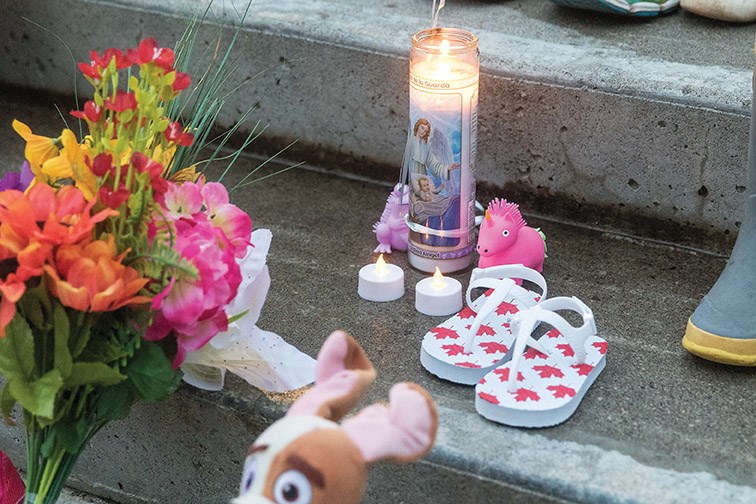For generations, Canadian children were taught about the country’s duality, meaning English and French. Colonial settler history, in other words.
It’s only been quite recently that kids have been taught the national duality between Indigenous peoples and European settlers.
There is also a religious duality at work.
At Lejac, the site of a former residential school (we really should call them child internment camps) near Fraser Lake, there are 14 crosses outside of the small cemetery, each representing one of the Stations of the Cross, documenting the final day of Christ’s life. They are written in French.
The stations are as Catholic as that religion gets, a fixture on the walls of every church large and small. They tell a story of suffering and dying for a greater good.
Inside the cemetery, the crucified Christ hangs on a large cross, three metres tall, with a smaller, peaceful Virgin Mary at its base. On the final day of the recent healing ceremony at Lejac, an Elder prayed, made the sign of the cross and solemnly touched the face of Mary. Unlike Protestantism and other Christian sects, Catholics elevate Mary as a divine figure in her own right, a mother figure. Even to this day, the name Mary is still a relatively common one within the Canadian Indigenous community.
There is a lesson here about recognizing sin and seeking forgiveness, about distinguishing the men of the cloth (who identified themselves as Missionary Oblates of Mary Immaculate, OMI for short) from Christ himself. Founded in 1816 “to bring the Good News of Christ to the poor,” this Catholic order committed genocide against Canada’s Indigenous peoples. There are six priests buried in Lejac cemetery, surrounded by the individuals they and their order victimized.
Normally, when Canadians look south to our American cousins, we claim superiority. Maybe we should look south and say we are them.
America’s original sins are both genocide and slavery, sins it has spent centuries denying and has, like Canada, only taken small steps towards reconciling the racist lies and myths of the settler narrative.
Another startling similarity between Canada and the U.S. is how Christianity, the religion of the colonial oppressors, was so enthusiastically adopted by its oppressed peoples, both Black and Indigenous.
As Henry Louis Gates Jr. recounts in The Black Church: This Is Our Story, This Is Our Song, Blacks adopted Christianity, formed their own churches and worked in some of their own unique traditions.
Why adopt the religion of their enslavers, he asks? The answer is right there in the biblical story of an enslaved people endlessly fighting for liberation and freedom, following the words of peace of the chosen one who gave his own life for the sins of the faithful, so they might be truly free in the everlasting.
Adopting the Christian example, both Canada and the United States have taken in refugees and immigrants from around the world throughout their long and complex histories. These new citizens faced and continue to face racism, hate and violent attacks in their adopted countries. They are grateful, resentful and hopeful all at once and who can blame them?
What kind of country, what kind of people, welcomes Muslim immigrants in one breath and then murders them on the street and in their places of worship?
And what kind of country, what kind of people, embraces Christian values of peace and then attempts to eradicate an entire group of God’s children?
The time has come when all Canadians must be able to freely say God bless Canada and God damn Canada in the same breath. Immigrant, Indigenous, settler alike, we can be proud and angry about our home and its history. We can learn from our ancestors and vow to be better than them.
Here’s one final example of the Canadian duality.
Last Thursday, Cowessess Nation in Saskatchewan announced the discovery of 751 unmarked graves at the former Marieval Indian Residential School.
Later that same day, Carey Price, the future Hall of Fame goaltender of the Montreal Canadiens, was interviewed about his excitement to play in the first Stanley Cup final of his long career. He chose instead to acknowledge his mother, who had just been re-elected chief of Ulkatcho Nation (Anahim Lake), in both English and Dakelh.
How fitting is it that, in this moment of so much righteous anger and grief, an Indigenous man is the most valuable player on a hockey team called the Canadiens?
That is something worth celebrating and reflecting on, however you choose to recognize Canada Day.



